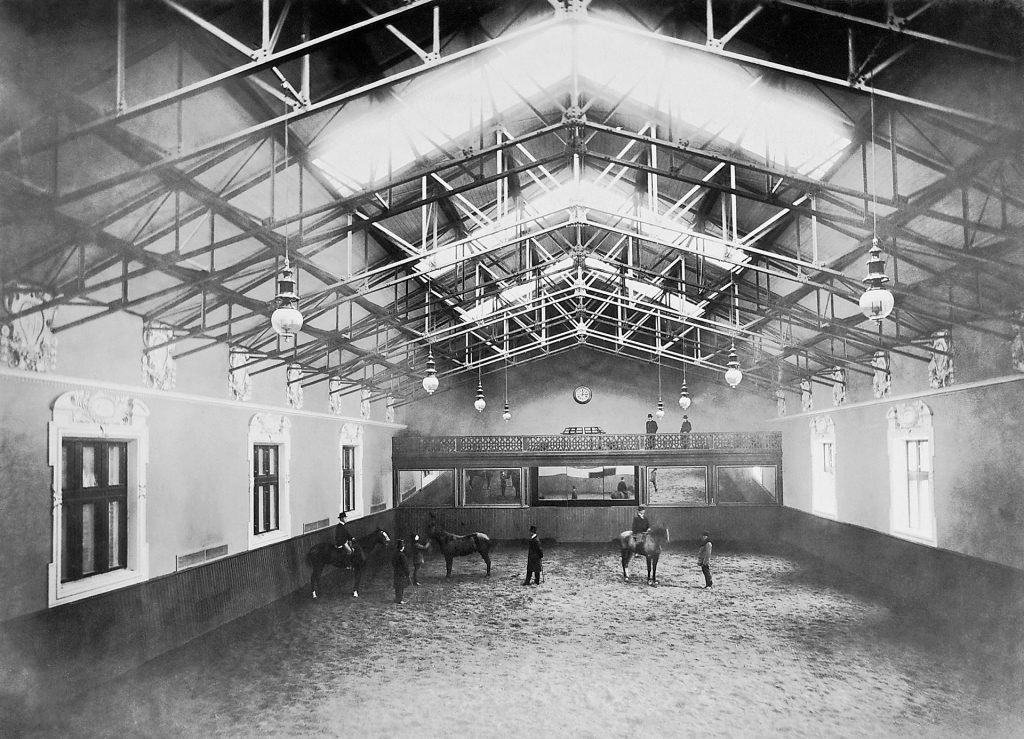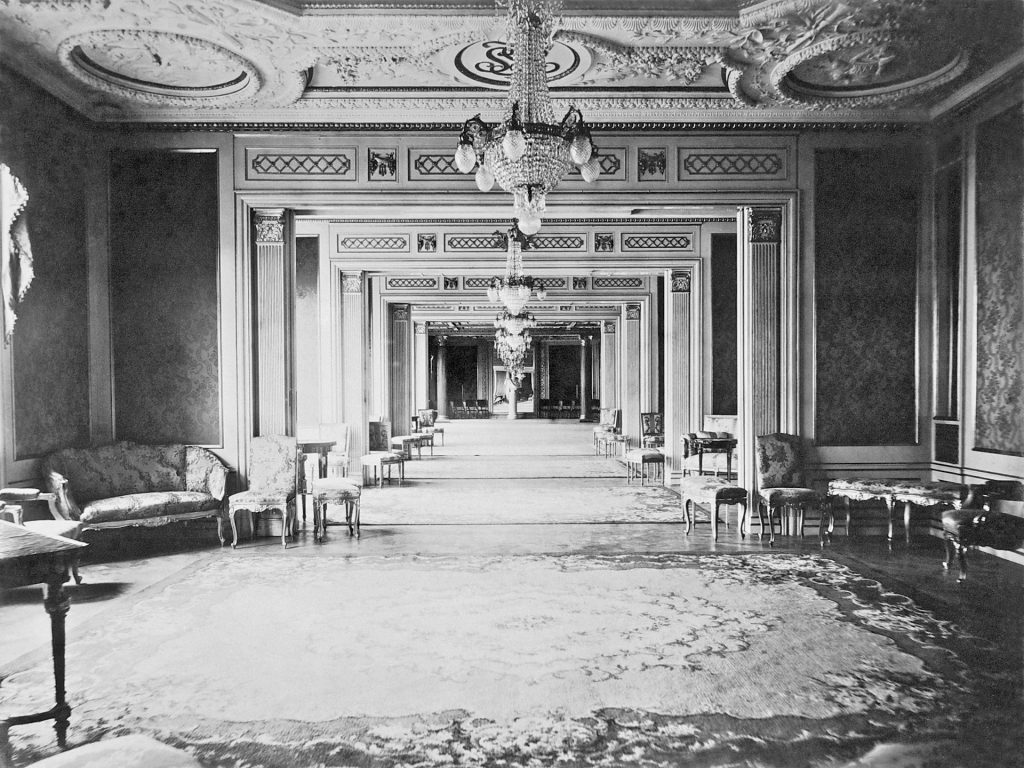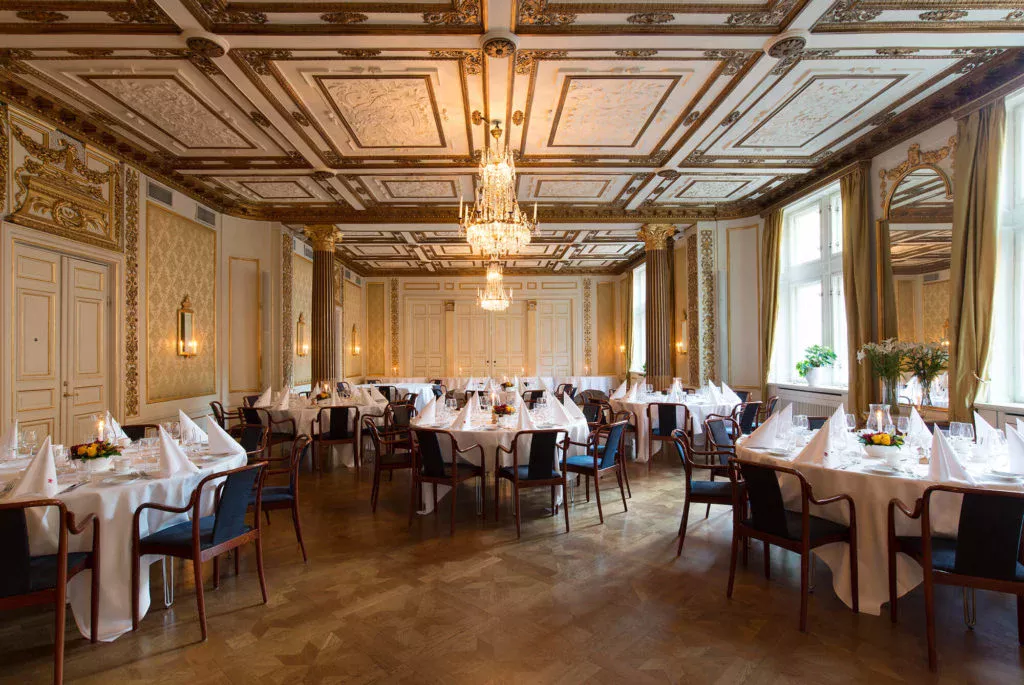Historien om IVAs hus
Gatuhuset hade liksom nu restaurang och butiker i bottenvåningen samt festvåning en trappa upp. I restaurang Grodans matsal kan de ursprungliga takmålningarna fortfarande beundras.
Festvåningen, med sidentapeter inhandlade i Paris och stucktack i vitt och guld, är i dag i stort sett oförändrad. Där fanns den stora festsalen, tre mindre salonger, musiksalongen och ”lilla festsalen” som numera är IVAs vetenskapsbibliotek. När skjutdörrarna öppnades fick man en 47 meter lång sammanhängande sal, ”antagligen den största i Stockholm”.
Här kan idag upp till 175 gäster serveras vid sittande bord.
Två trappor upp hade diverse klubbar sina lokaler och på nästa våning bodde ridhuschefen och källarmästaren. I vindsvåningen fanns en ”velocipedskola” med en träningsbana lika lång som hela fastigheten. I samma lokal drevs också en ”lawntennisskola”. Publikmässigt blev Stockholm Tattersall en succé, men redan 1901 gick företaget ändå i konkurs.

Tattersall Stockholm
Namnet Tattersall förknippades ursprungligen med ridsport genom Richard Tattersall som grundade Tattersalls i London 1766. Man bedrev mäklarverksamhet, kapplöpningar, vadhållning och utställningar. Med tiden öppnade Tattersall även i Paris, Berlin, New York, Sydney och i Stockholm invigdes Tattersall i december 1898. Ridsport var huvudinriktningen och här fanns ett modernt stall för 90 hästar samt en stor manege i två våningar på gården. I den övre hallen, med en rymlig åskådarläktare två trappor upp och musikläktare på motsatta kortväggen, ägde ridlektioner och uppvisningar rum. Där fanns ”kolossala speglar, så att ryttarinnorna ha rikt tillfälle att beundra med hur pass elegans de föra sig i sadeln”.

NK, brand och tekniska muséet
Under några år flyttade NK, Nordiska Kompaniet, sina avdelningar för möbler och sängkläder med verkstäder, magasin och utställning till de gamla ridhuslokalerna. Entrén och butikernas fronter fick då ungefär sitt nuvarande utseende. En stor brand 1913 totalförstörde mellanhuset liksom gatuhusets vindsvåning, trots att alla tillgängliga resurser sattes in, bl a Stockholms första ”automobilspruta”.
Redan efter ett år var huset uppbyggt igen. Gatuhuset hade nu en ny vindsvåning med bostäder och mellanhuset hade helt byggts om och fått bostadslägenheter. På vinden fanns en ateljélägenhet där akademiens dotterinstitut Tekniska Museet öppnade sin första lilla provisoriska utställning 1926. Tyvärr var det ståtliga ridhuset för alltid borta. Eftersom IVA:s skapare, Axel F. Enström, övertog fastighetsbolagets aktier i mars 1919, kunde Ingenjörsvetenskapsakademien genast efter bildandet, hösten samma år, slå sig ner under eget tak.

Moderna möteslokaler
En viktig uppgift för Akademien är att vara en mötesplats för näringsliv, forskning och politik och behovet av mötelokaler är därför mycket stort. Med tiden har ett effektivt och välutrustat konferenscenter växt fram och i början av 1980-talet tog man steget att öppna IVA Konferenscenter för den allmänna marknaden. Idag är konferenscentret en av Stockholms mest välbesökta mötesplatser och en viktig del av den Kungl. Ingenjörsvetenskapsakademien.
I fastigheten finns idag, förutom IVA och IVA Konferenscenter, ett 30-tal hyreslägenheter, ett 10-tal kontorshyresgäster, restaurang Grodan samt ett par exklusiva butiker.
